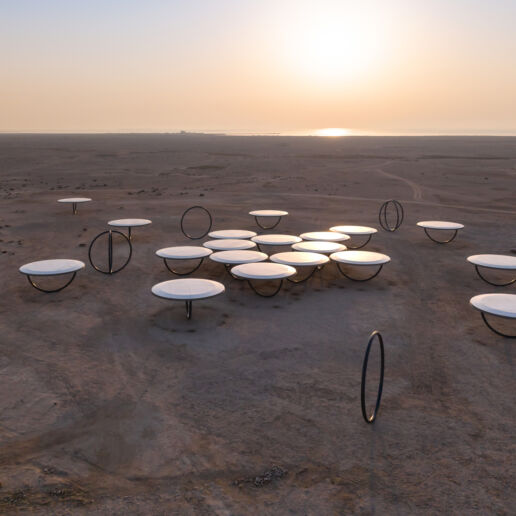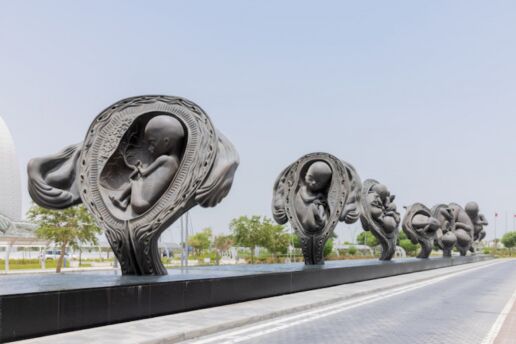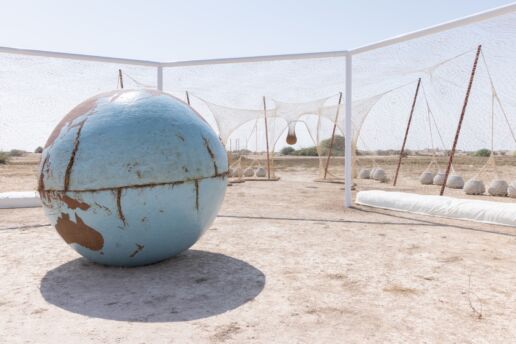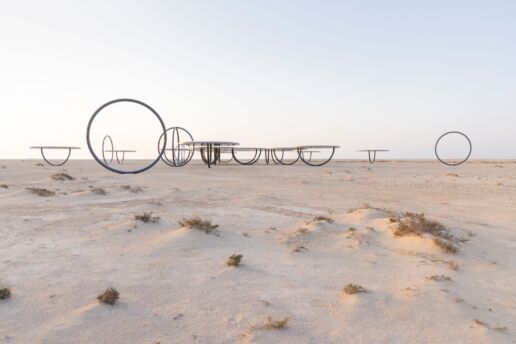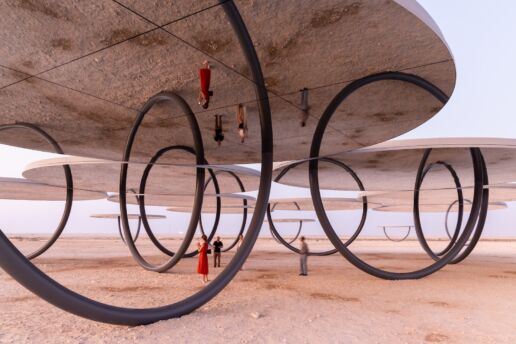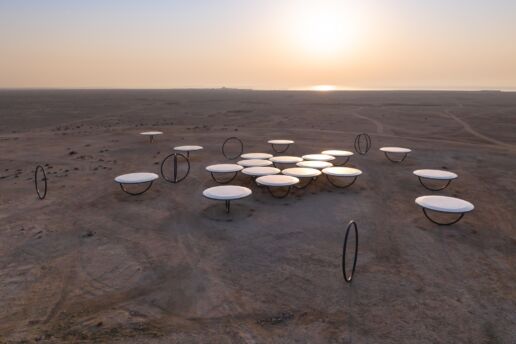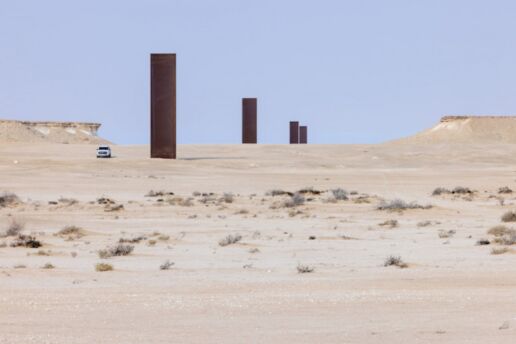ART SAFARI IN DOHA
An installation by Olafur Eliasson that resyncs humans with the planet
Artist and architect Olafur Eliasson is known for his sculptures and large-scale works. His new installation was set up in the desert north of Doha, coinciding with the 2022 FIFA World Cup held in Qatar. ‘Shadows Traveling on the Sea of the Day’, consists of twenty rings made of various materials including steel, fiberglass, and mirrors. Located near the UNESCO World Heritage site of Al Zubarah in northwest Qatar, the installation was designed to highlight the significance of the site.
Often focusing on climate change, Olafur Eliasson’s work invariably relates to their immediate environment. The artist started working on this project 10 years ago and the installation took four years to complete. His fascination with the desert landscape led the artist to make a permanent work of art. According to Eliasson, the lifespan of the installation extends far beyond a month-long football tournament. Featuring discs with a reflective lower surface that rests on steel rings, the installation resembles a bunker. From an aerial perspective, the installation looks like a symmetrical five-pointed star, referring to medieval Islamic patterns with discs and steel rings. With some inspiration from Olafur Eliasson’s definition of his work; you could say that walking under the reflective discs and looking up means that you are actually looking down at the world and at yourself, as well as the view of desert plants, animal tracks, and rock formations. According to Eliasson, this detail emphasizes the human’s attachment to the soil. The creative process is beyond the world cup because the artist’s main prediction is that Qatar will be severely affected by climate change due to its location, and hopes that wandering under the mirrors will increase environmental awareness among people.
‘Shadows Travelling on the Sea of the Day’ is an invitation to resync with the planet. It is a celebration of everything being in and moving through the desert site north of Doha at the time of your visit – animals, plants, and human beings; stories, traditions, and cultural artifacts; wind, sunlight, air, and shimmering heat.’ Olafur Eliasson.
Showcasing more than 100 artists, as well as Olafur Eliasson, the art exhibitions held in collaboration with Qatar Museums, have transformed the city into an open-air museum. The works of Simone Fattal and Ernesto Neto are also located near the heritage sites in the north. Contemporary artworks on display while touring the city include award-winning artists such as Damien Hirst, Richard Serra, Jeff Koons, Faye Toogood, Yayoi Kusama, and KAWS.
It’s been years since Qatar has been preparing for the World Cup, which kicked off on 20 November and reaches a finale on 18 December. Qatar is said to have invested over $300 billion in projects ranging from stadiums, museums, hotels, and real estate. Perhaps the most controversial tournament in history is being played in Qatar, also the first Middle Eastern country to host the World Cup finals. The country has been widely criticized for its human rights record, the conditions in which migrant workers live, and anti-LGBT laws.
These issues matter to Olafur Eliasson who said, ‘For me, working in Qatar has meant entering into a context where I am confronted with values that are different from my own – sometimes radically so. I adamantly believe in the right of everyone to express themselves freely, in particular with regard to their gender and sexual orientation, and I am a strong believer in upholding human rights, as outlined by the UN (United Nations).’


